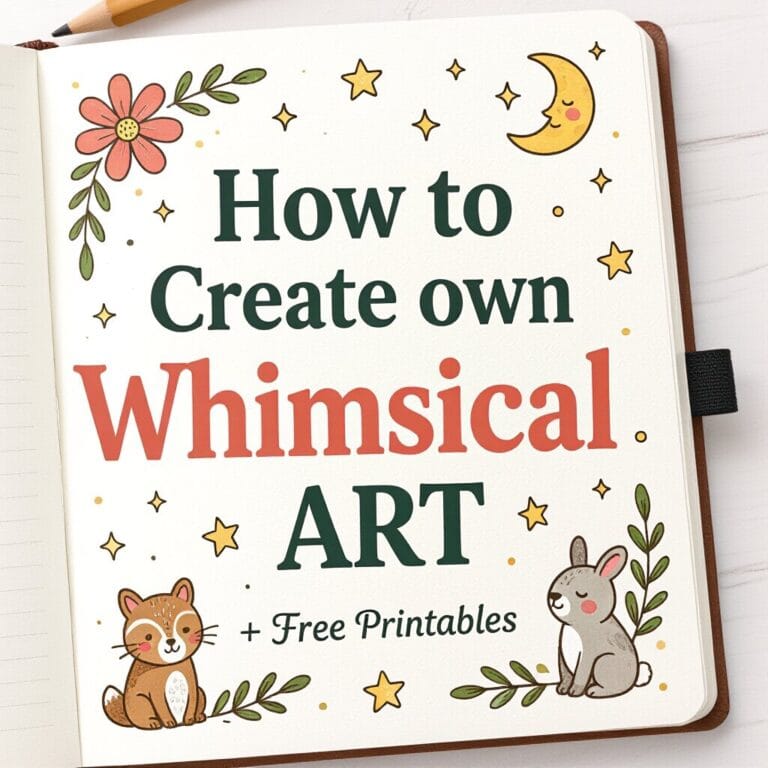Last Updated on November 17, 2025 by Dee
If you are looking for new ways to fill your sketchbook, whimsical art ideas can offer a fresh and playful approach.
Drawing imaginative scenes, magical creatures, and unexpected combinations can boost your creativity and keep your sketchbook exciting. Download the free Whimsical Art Printables at the end of this post!
You don’t have to be an expert artist—just bring your curiosity and a sense of fun.
It’s about letting your ideas flow, trying new things, and letting your imagination lead the way.
Use these prompts to relax, experiment, and see where your art takes you.

Table of Contents
Key Takeaways
- Find unique and playful ideas for your sketchbook.
- Boost your creativity and try imaginative prompts.
- Enjoy new drawing techniques for a fun creative journey.
Getting Started with Whimsical Sketchbook Art
Having the right supplies and setting can make sketchbook art more enjoyable.
Picking good tools, a sturdy book, and a cozy spot helps you stay inspired and comfortable as you draw.
Choosing the Right Sketchbook
A quality sketchbook sets the stage for your art.
Look for one with thick, smooth paper that can handle erasing, layering, and colored pencils without tearing.
Choose between spiral-bound for easy flipping or hardbound for a classic feel.
The right size matters too.
A smaller sketchbook is easy to carry, but a larger one gives you more space for big ideas or mixed media.
Many artists like sketchbooks that can lay flat for easier drawing.
For whimsical art, a book with plain, white pages works best, but you can also try off-white for warmth or toned paper for a different look.
Essential Drawing Tools
Start with a few quality graphite pencils in different hardness levels, such as HB for sketching and 2B or 4B for shading.
This helps you create light lines or deep shadows.
Colored pencils bring color to your work and are easy to blend.
Markers or gel pens can add pops of color or outline details.
If you love experimenting, add a set of fine liners or water-based markers.
Keep a soft eraser and sharpener nearby.
A ruler, blending stump, or brush can be useful for special effects.
For more tips on art supplies, see these ideas about essential tools for bringing your drawings to life.
Creating a Comfortable Art Space
Comfort and warmth help you focus on being creative.
Find a space with good lighting, either near a window or with a bright lamp.
Make sure you have a table or flat surface to support your sketchbook.
A cozy chair can help you stay relaxed.
Some people like adding a cushion or blanket for extra warmth.
Keep your favorite snacks or a cup of tea nearby if it makes you feel more at ease.
Keep your art tools organized in a box or caddy so they are easy to reach.
A tidy space helps you stay focused and makes starting new whimsical drawings feel inviting.
Unlocking Creative Inspiration
Getting inspired can be simple if you know where to look.
Everyday objects, new drawing prompts, and ways to push through creative blocks can all help you fill your sketchbook with playful charm and unique ideas.
Finding Everyday Objects to Draw
You don’t always need fancy subjects to start drawing.
Look around your space—there’s inspiration everywhere.
Common items like houseplants, your morning mug, or even headphones can tell a story through your art.
To make it fun, try drawing the same object from different angles or with different expressions.
You might even turn a boring stapler into a whimsical character.
List what’s around you and pick one to turn into the star of your sketchbook page.
Nature is another great choice.
Fruit, leaves, rocks, or clouds each offer interesting shapes and textures.
Drawing these common things helps you see the creativity in unexpected places.
For more ideas, check out lists of whimsical drawing prompts online.
Sparking New Drawing Ideas
When you need fresh ideas, try mixing things up in your sketchbook.
Layer different colors, doodle patterns or combine unrelated things—like a cat with butterfly wings.
This playful approach can jumpstart your creativity and lead to new styles.
Journaling how you feel and turning those emotions into sketches is another way to spark new art.
If you’re feeling joyful or even a bit bored, reflect that through playful doodles, funny faces, or abstract shapes.
The goal is to keep your pencil moving without worrying if it looks perfect.
You can also challenge yourself with drawing games.
Set a timer and sketch as many silly objects as possible in five minutes.
These exercises make creativity feel like play instead of a chore.
There are many lists of fun drawing ideas that can help you find your next sketch.
Overcoming Creative Blocks
It’s normal to run out of ideas or motivation.
If your mind is blank, step away for a short walk or listen to your favorite song.
Sometimes a break is all you need.
You can also get inspired by using a sketchbook ideas generator.
Random prompts can push you to try something different, even if it feels silly at first.
Trying collage or experimenting with new materials, like markers and watercolor, can also give you a fresh spark.
Reflect on what makes you enjoy drawing in the first place.
Sometimes, working through a block means letting go of perfection and letting your creativity feel messy and fun.
Don’t be afraid to create something unusual or simple—each page brings you closer to your unique style.
Whimsical Drawing Techniques and Styles
Bringing whimsy into your sketchbook means combining fun, curiosity, and bright expression with different drawing methods.
Using mixed media, exploring quick or detailed sketching, and choosing rich colors can truly make your drawings playful and memorable.
Quick Sketches with Playful Energy
Quick sketches capture the heart of whimsy.
You don’t have to worry about mistakes because these sketches celebrate spontaneity and energy.
Use loose, flowing lines to draw animals, plants, or little objects in motion.
Try doodling with pens, pencils, or even colored markers.
Don’t erase too much—sometimes messy lines add character.
Draw rapidly to keep your ideas light and fun.
A quick sketch might include:
- Silly faces with goofy expressions
- Dancing animals
- Swirling, looping patterns
Set a timer for 1-2 minutes per sketch.
This keeps your creativity fast and loose.
If you want extra inspiration, you’ll find more playful sketch ideas on this list of whimsical drawing prompts.
Adding Detail to Illustrations
Detailed illustrations bring a rich, storybook feel to whimsical art.
Start with a light sketch, then slowly add layers of small details.
Use fine liners, gel pens, or sharp pencils for crisp lines and tight spaces.
Try adding textures with crosshatching, dots, or swirls.
You can use tortillons (blending stumps) to gently blend pencil shading for soft shadows or smooth color changes.
Ideas for adding detail include:
- Patterns on clothing or backgrounds
- Leaves and fur with tiny strokes
- Small objects clustered in corners
Details help pull people into your drawings, making them want to explore every part.
Even cute aesthetic drawing ideas can gain depth with subtle detailing.
Mixing Media for Unique Effects
Mixing different art supplies can lead to unexpected and exciting results.
Combine watercolor washes with colored pencils, or layer gel pen highlights over crayon or marker.
Mixed media lets you create textures and effects you can’t get with one tool.
For example, draw shapes with a black pen first, then fill areas with watercolor or colored pencils.
You could even glue bits of paper, press leaves, or use washi tape for added interest.
Tips for mixed media:
| Media Combo | Effect |
|---|---|
| Watercolor + Ink | Bright, bold outlines |
| Colored Pencil + Marker | Soft, colorful layers |
| Gel Pen + Crayon | Shiny highlights, waxy base |
Explore more ideas for whimsical mixed media art to broaden your techniques.
Exploring Vibrant Hues and Colors
Whimsical art loves color.
Using vibrant hues, like brilliant pinks, blues, or yellows, can help your sketches pop.
Don’t be afraid to use colors that don’t match reality—purple trees or orange clouds can make your page stand out.
Pick a few favorite colors first, then try adding their opposites (complementary colors) for extra contrast.
Use markers for bright blocks, colored pencils for soft shading, and watercolor for loose, dreamy backgrounds.
Mixing colors:
- Layer two or three colors for new shades
- Try using a color wheel to pick bold pairs
- Add white gel pen or pastel details last for freshness
Experiment with color to discover your own whimsical style, giving every sketchbook page a unique mood.
Classic Whimsical Sketchbook Prompts
Whimsical art brings a playful touch to your sketchbook pages. Focusing on doodles, faces, and hands lets you practice both creativity and technique.
This helps build your confidence with different ideas and styles.
Imaginative Doodles and Patterns
Filling a page with whimsical doodles is a fun way to warm up. Try drawing repeating shapes, wavy lines, and small surprise objects like tiny stars, cupcakes, or hats.
Mix and match patterns—zigzags, polka dots, and swirls—to cover the space. Use bold lines and switch to colored pencils or markers for extra flair.
Some artists like to add mini-scenes, such as floating animals or everyday objects acting silly. This sparks creativity and fills your sketchbook quickly.
If you ever run out of ideas, check out lists of fun drawing ideas that can inspire your next page of doodles.
Drawing Faces with Unique Expressions
Faces are always interesting to draw, and altering their expressions makes them even more whimsical. Begin by sketching simple face shapes: circles, ovals, or even squares.
Exaggerate features like large eyes, squiggly eyebrows, or big grins to show unique personalities. Play with different facial expressions—surprise, laughter, or curiosity.
Combine unusual elements, such as animal ears, hats, or freckles, for a playful result. Try drawing a small page of face thumbnails, each with a different emotion.
This helps you practice variety without feeling overwhelmed. For even more practice, use sketchbook prompts that focus on emotions and daily moods.
Capturing Hands and Gestures
Hands can be tricky to draw, but they add life and movement to your sketches. Start by outlining simple hand shapes: open palms, fists, or hands waving.
Pay attention to the curve of the fingers and how a thumb sits. Use reference images or even your own hand as a model.
Try drawing hands that are holding objects, making silly gestures, or reaching out in strange ways. Change up the scale—big hands on a small character, or tiny hands on a large face—for a quirky effect.
Practicing hands improves your ability to draw people and brings more action into your art.
Inventive Scenes for Artistic Exploration
Turn your sketchbook into a space for playful experimentation. Whether you love to draw magical worlds, unusual animals, or silly moments with your pet, these ideas help you explore your artistic expression in fun new ways.
Creating Dreamscapes
Dreamscapes are imaginary worlds that blend reality with fantasy. To make a dreamscape, start by sketching a normal landscape from your imagination, then add unexpected details—floating islands, giant flowers, or odd-looking buildings.
Add elements that feel surreal, like a sky filled with oversized bubbles or trees with glowing lights. Play with unusual colors and shapes to make the scene more magical.
You can even add a character exploring the world to give your drawing a story. Try using materials beyond your normal pencil—think watercolors, colored pencils, or ink pens.
This helps different parts of your dreamscape stand out. For more ideas on unusual settings, visit these daily drawing ideas for all seasons.
Designing Mythological Creatures
Mythological creatures are imaginary beings often found in stories and legends. Start by combining features from real animals, like giving a bird the tail of a fish or the antlers of a deer.
Think about where your creature would live—is it hiding in a dark forest, flying in a dreamscape, or swimming in the sea? Focus on the creature’s expression: is it fierce, wise, or silly?
Add details that show its personality, such as scales, feathers, or glowing eyes. It can help to sketch ideas in your notebook first so you can mix and match features without worrying about mistakes.
Make a list of famous mythological creatures for inspiration. Examples include:
- Dragon: Lizard with wings, often breathing fire
- Griffin: Lion body, eagle head and wings
- Unicorn: Horse with a single horn
Invent some of your own by blending favorite animals and adding fantasy elements. Enhance your creature with shadows or bright highlights to give it more depth.
Illustrating Your Pet in a Playful Setting
Drawing your pet can be both fun and personal. Choose a setting that is playful and different from their everyday life—like your cat riding a skateboard, or your dog dressed as a superhero.
Capture their unique features, such as a crooked tail or missing tooth, to make the drawing truly yours. Sketch your pet in motion for extra energy.
Try showing them leaping, rolling, or playing with a favorite toy. You can use colored pencils or markers to highlight their fur pattern and bring out their character.
Add small elements to tell a story, like a background of park trees or a living room turned into a racetrack. For even more inspiration, you can look at fun drawing ideas to fill your sketchbook.
Mix real observations with your imagination for a drawing that is both personal and whimsical.
Whimsical Worlds and Fantastical Places
Let your creativity lead you into magical landscapes where the extraordinary feels possible. Imagine playful settings, curious buildings, and hidden nooks where adventure could begin at any moment.
Drawing Enchanted Forests
When drawing an enchanted forest, try to mix tall, twisting trees with unusual plants and oversized mushrooms. You can add winding paths, sparkling streams, or glowing lanterns to give the forest a curious feeling.
Leaves might look like stars or have swirls and patterns. Think about what lives among the trees.
Little tents, fairy doors, tiny swing sets, or even glowing windows in tree trunks suggest someone or something calls the place home. Add animals—real or imagined—peeking out from behind leaves, or mysterious footprints in the dirt.
Use colored pencils or watercolors for dreamy backgrounds. Dark greens, soft blues, and pops of bright color make the space feel lively and welcoming.
Inspiration might come from magical locations in fantasy stories or photos of thick, wild woods.
Sketching Whimsical Castles
To create a whimsical castle, let your designs bend the rules. Stack towers at odd angles and add wavy lines to the rooftops.
Draw plenty of windows in playful shapes—circles, hearts, or even animal faces. You can line the stone walls with flowering vines or quietly watchful gargoyles.
Include flags waving from the tallest spires, secret archways, or drawbridges. Place your castle on a floating cloud, a cliff, or surrounded by a moat filled with lily pads.
Little tents or market stalls near the entrance hint at a busy life just outside the castle. Make your castle look inviting by using soft colors, sparkles, and unique details.
Play with mixed media by adding newspaper collage for bricks or shining markers for stained glass. For more ideas, browse collections of whimsical places for visual inspiration.
Building Tiny Houses and Hidden Rooms
Tiny houses and secret rooms give your sketchbook cozy surprises. Draw miniature treehouses with rope ladders, houses shaped like teapots, or little homes tucked into mushrooms.
Imagine windows that glow softly, or tiny front doors with colorful mats. Create hidden rooms behind bookshelves, under staircases, or inside a winding root.
You could show only a sliver—a hidden doorway, a window peeking out from a trunk, or a tent nestled between oversized plants. These details invite viewers to imagine what’s inside.
Use a list to spark ideas:
- Attic with porthole window
- Tent covered in wildflowers
- Hobbit-style round door in a hill
- Secret room behind a swinging bookshelf
Adding small tables, lanterns, and friendly touches brings warmth to your world. For more sketchbook ideas, there are plenty of prompts to help you invent hidden spaces and unique houses.
Magical Creatures and Imaginary Beings
Drawing magical creatures is a great way to make your sketchbook more lively and fun. These subjects help you practice creativity, details, and even a bit of storytelling while sketching.
Dragons and Other Beasts
Dragons remain a favorite subject for whimsical drawings. They can have long, curling bodies, sharp claws, and fierce expressions, but you can shape them any way you like.
Try sketching a dragon with large, feathered wings, or give it scales that look like jewels. Other beasts like unicorns, griffins, and chimeras are also popular.
You might want to draw a smiling sea serpent or a friendly yeti in a snowy forest. Using fantasy creature drawing ideas from different cultures will bring more excitement and variety to your art.
List of ideas:
- Water dragons gliding through lakes
- Unicorns with rainbow manes
- Tiny dragons sitting on mushrooms
- Winged cats flying in the sky
You can mix and match features from real animals, too. This will boost your imagination and give you even more styles to try in your sketchbook.
Butterflies with Intricate Wings
Butterflies are magical creatures that offer endless chances to be creative. Their wings can show every color and pattern you can think of.
Draw small, detailed lines on the wings and use bright markers or pencils to make them stand out. Try creating your own butterfly species.
You can use swirly, abstract shapes for the wings or add tiny stars and hearts as the patterns. Adding a golden or rainbow glow around your butterfly helps make it look even more whimsical.
For ideas, you can look at places that focus on whimsical fantasy art for inspiration.
- Draw butterfly wings with layer patterns
- Combine butterfly shapes with flowers or leaves
- Use stickers, gel pens, or metallic ink for extra sparkle
Creative Zodiac Sign Representations
The twelve zodiac signs can be turned into imaginative creatures or scenes. For example, sketch a glowing, watery fish for Pisces or a majestic lion with a mane full of stars for Leo.
These signs can be animals, human-like beings, or even spirits. Try mixing symbols and elements from each zodiac.
Aries could be a ram with swirling fire around its horns while Capricorn might become a mountain goat with a fishtail. You can also draw the zodiac signs as playful cartoon characters or magical beings with fancy costumes.
| Zodiac Sign | Creature Concept | Extra Detail |
|---|---|---|
| Aquarius | Water fairy | Splashy wings |
| Taurus | Forest bull | Vines in the horns |
| Gemini | Twin cats | Opposite color patterns |
| Scorpio | Shadow scorpion | Glowing tail |
Nature and Outdoor Inspirations
Fresh air and natural light can spark some of your most creative sketches. Drawing from the outdoors helps you notice colors and shapes you don’t see inside.
Ocean and Whale Adventures
Imagine the ocean’s rolling waves, scattered driftwood, and playful dolphins leaping in the distance. Try sketching a scene where gentle tides pull at seashells along the shore.
Focus on the movement of the water by using curved lines, or capture the reflection of the sky in the seawater. Whales give you a chance to practice drawing big, flowing shapes.
You can create a calm moment with a whale’s tail splashing above the surface or show a pod swimming together. To make your sketchbook more lively, add details like seagulls, boats, or tiny fish darting beneath the waves.
Include textures, too. For example, rough rocks and soft sand add interest and variety to your drawings.
If you want more ocean prompts, these nature drawing ideas can help you grow your sketchbook.
Fields and Sunrise Chill
Try drawing wide fields with tall grass waving in the early morning breeze. Sunrises make great studies for color blending.
Begin with light pink or orange where the sun peaks over the edge of a distant hill, and blend into blue above. Capture rows of wildflowers, a winding dirt path, or a lone tree in the distance.
You might also add animals like rabbits or birds that hop through the tall grass. Pay attention to how the sunlight casts long shadows and makes the dew on each blade of grass glisten.
If you want an extra challenge, sketch the same field at different times in the morning as the sun rises higher. Your drawings can show how the scene changes each minute.
For more seasonal ideas, look at these nature drawing prompts.
Exploring Puddles and Rainy Days
Rainy weather brings its own charm to your sketchbook. Puddles reflect the sky, trees, and people in interesting ways.
Draw rain streaking down windows, raindrops splashing into puddles, or boots stomping through wet sidewalks. Create fun comparisons by sketching how puddles look in different places—a muddy field, a city street, or under a playground swing.
Add simple details like leaves floating or insects skipping on the water. Think about the mood, too.
Some rainy scenes feel cozy, while others feel quiet and still. Play with darker colors for clouds and lighter spots for reflections.
If you want more ideas for outdoor art in different weather, check these nature sketching prompts.
Urban and Everyday Life Sketches
Sketching scenes from city life and daily routines can help you practice your observation skills. Everyday places and moments often have details that are fun to capture, like unique city skylines or lively coffee shops.
Capturing Urban Skylines
When you sketch a skyline, focus on the shapes of the buildings and the spaces between them. Look for interesting rooftops, sharp angles, or curved domes.
Try using different line weights for depth. Use bold, thicker lines for buildings in front, and lighter, thinner lines for those farther away.
You can use a fine-tip pen to outline the city, then add pops of color to windows or skies. Experiment with composition by framing the skyline with trees or bridges.
Adding clouds, birds, or even distant mountains brings your drawing to life. Practice drawing your city’s skyline at different times of day.
Sunset and night scenes with glowing lights can look striking in your sketchbook. For more creative ideas, you can read inspiration for urban illustration and ways to make the city your muse.
Urban Sketching with Creative Twists
Urban sketching is not just about copying what you see. Add your own creative twist by mixing reality with imagination.
Instead of just drawing people walking by, turn them into playful characters or add unexpected props, like giant coffee cups or pets with hats. Try using mixed media in your sketch.
For example, draw the street in pen, but use watercolors for splashes of color on street signs or cars. You could add a short list of street sounds beside your drawing to help remember the atmosphere:
Example:
- Honking horns
- Chattering crowds
- Music from a nearby shop
Draw what interests you most, like city bikes leaning on lamp posts or graffiti on brick walls. If you need even more prompts, sites list dozens of sketchbook ideas to keep your mind fresh.
Drawing Coffee Shops and Retro TVs
Coffee shops are excellent places to sketch because there’s always something happening. Draw the counter, the coffee cups, or the people chatting and reading.
Pay attention to the tiny details, like latte art, the shapes of mugs, or pastries in a display case. Retro TVs are great for practicing drawing geometric shapes, patterns, and shading.
Start with a simple box shape, then add round dials, small screens, and antennas. You can make your TV show images, patterns, or static to give a nostalgic feel.
Create a table comparing objects you might see:
| Coffee Shop Details | Retro TV Features |
|---|---|
| Espresso machines | Rounded screens |
| Stools and chairs | Knobs and dials |
| Hanging lights | Antenna on top |
| People with laptops | Wood-paneled casing |
If you want more fun subjects, there are plenty of drawing ideas for sketchbooks online to help you get started. Try mixing these themes together, like drawing a retro TV in a modern coffee shop for a touch of whimsy.
Objects with Whimsical Flair
Playful objects can turn a blank page into a world of imagination. Adding small details like floating balloons, glowing jars, or mysterious potions lets your sketchbook feel lively and magical.
Unique Balloon Designs
Balloons are fun to draw because you can make them look any way you want. Try sketching balloons in odd shapes, like stars, fish, or even tiny houses floating in the air.
Draw patterns on them—polka dots, stripes, swirls, or even cute faces. You can make your balloons look more whimsical by tying on whimsical strings, adding bows, or attaching messages.
Imagine one with a fluffy cloud as its base instead of the usual knot. List your ideas in the corner so you don’t forget them.
A group of colorful, unusual balloons makes any sketchbook page pop. For inspiration, browse some whimsical drawing ideas to spark your creativity.
Jars With Magical Contents
Drawing jars is simple, but the magic comes from what’s inside. Fill jars with mini fairy gardens, glowing fireflies, stars, or even tiny floating islands.
You could even show something surprising, like a jar packed with rainbows, bubbles, or curious creatures. Add little labels or sparkles around the jar to make it feel even more magical.
Use soft colors and gentle shading to create that glassy look. Try lining up jars in a row, each with something new inside.
Don’t be afraid to experiment with jar shapes—short, tall, wide, or narrow. For more playful inspirations, check out some cute whimsical drawing ideas.
Potions and Their Stories
Potions are perfect for adding a touch of fantasy. You can draw bottles of all shapes and sizes, filled with swirling liquids, colorful bubbles, or floating glitter.
Give each potion a unique name and a little tag explaining what it does, such as “Potion of Good Dreams” or “Elixir of Laughter.” Show potion bottles with corks, ribbons, or even little charms hanging from them.
Try placing a few on a shelf or table with tiny drops spilling out for extra movement in your drawing. Mixing different bottle styles—round, square, teardrop—gives your art more variety.
To bring your potions to life, add sparkles and glow effects. If you need more ideas, browse collections of easy whimsical drawing prompts.
Nostalgic and Playful Art Ideas
Bring back fond memories and let your imagination soar by combining classic themes with modern sketching styles.
Use your sketchbook to explore gentle patterns, vintage objects, and bold scenes from your childhood.
Bouquets and Mandalas
Drawing a bouquet lets you practice both shapes and color combinations.
You can start with basic flowers like daisies or tulips, or try different textures by adding leaves, stems, or even delicate baby’s breath.
Layering petals gives your bouquet depth and a sense of fullness.
Mandalas focus on symmetry and repetition.
Begin with a circle in the middle of your page.
Add rings with repeating patterns, such as dots, spirals, or lines.
Mandalas can help you relax and improve your attention to detail.
Here’s a quick idea list to get you started:
- Classical rose bouquets in a vase
- Wildflower bunches tied with ribbon
- Mandalas with hearts or stars in each ring
- Petals colored with pastels or neon markers
You could even draw a bouquet arranged in a mandala pattern for a unique twist.
For more inspiration, check out these sketch book art ideas.
Cassette Tapes and Rocket Ships
Cassettes let you capture the fun mood of the ’80s and ’90s.
Their simple shapes—rectangles, spools, and labels—make them a great subject for bold outlines and pastel backgrounds.
Add a tape unspooling across the page, or doodle tiny music notes floating out.
Rocket ships offer endless playful details.
Try sketching a classic silver rocket with bright flames and windows.
Add planets, stars, or even aliens peeking through the windows.
Use metallic markers to highlight the rocket and show movement with swooshing motion lines.
If you like the vintage look, draw a rocket blasting off next to a cassette tape, as if the music powers the launch.
You’ll find more vintage drawing ideas that can fit these playful subjects into your sketchbook.
Pushing Artistic Boundaries
Exploring new art techniques can help you grow as an artist.
When you challenge yourself with different styles, your sketchbook becomes a place for real artistic exploration.
Optical Illusions in Art
Creating optical illusions lets you play with how people see your drawings.
You can use simple shapes, repeating patterns, and shadows to trick the eye.
Try drawing a spiral that never ends, or a cube that looks like it’s popping off the page.
Make your lines bold and keep your shading smooth to help the illusion stand out.
You can also combine curved and straight lines to create a sense of depth.
There are many ideas to get inspired by, including wavy checkerboards or impossible triangles.
For more unusual optical trick prompts, check out a collection of drawing ideas that keep things fun.
Experimenting with optical illusions teaches you about space and perception.
When you finish, step back and look at your drawing from different angles to see how the illusion works.
Creative Approaches to Perspective
Perspective drawing is all about making flat images look three-dimensional.
You usually start with a simple vanishing point, but you can get creative by changing the viewpoint or using more than one point.
Draw buildings from the ground looking up, or sketch long roads that curve out of sight.
Try drawing everyday objects from unusual angles.
This can make your art stand out and feel more realistic.
If you’re stuck, mix in tiny and giant objects in one scene to skew the sense of scale.
You can list out the types of perspectives you want to try:
- One-point perspective (like looking down a hallway)
- Two-point perspective (building corners and cityscapes)
- Bird’s-eye or worm’s-eye view
Still Life Drawing with a Twist
Still life drawing is a great way to practice art basics, but you can make it whimsical by changing something about the setup.
Instead of regular fruit, draw it floating in the air or melting over the edge of the table.
Replace standard objects with ones from your imagination, like a cup of stars or a flower made of gears.
Play with lighting or add unusual colors.
For example, use only blues and greens for a set of oranges to create a surreal effect.
You can even mix real objects with cartoonish elements to surprise your viewers.
If you’re looking for fresh prompts and want more options to keep your sketchbook lively, visit this collection of sketchbook art ideas.
Tips for Sustaining Your Sketchbook Journey
Building lasting sketchbook habits helps you see your creative journey in a new light.
Staying consistent lets you improve your drawing skills and grow as an artist with less pressure.
Tracking Progress and Drawing Skills
To watch your growth, keep track of your sketches over time.
Date your pages so you can see how your drawing skills change.
Try using sticky notes or a small chart in your sketchbook to note what you struggled with or enjoyed each day.
Some people use before-and-after pages.
For example, draw the same object at the start and end of each month.
This helps you notice changes that might be hard to see day by day.
You can even make a small table:
| Date | Subject | New Technique Used | Feelings About Page |
|---|---|---|---|
| 6/1/25 | Flowers | Cross-hatching | Fun, a bit tricky |
| 6/15/25 | Cat | Shading with pen | Much smoother |
Look at your notes to see what techniques are getting easier and where you want to practice more.
For more tips, see these creative sketchbook inspiration techniques.
Reflecting on Your Artistic Development
Reflection helps you understand what art means to you.
At the end of each week, read back over your past sketches and jot down a few sentences about what you learned.
Ask yourself what made you happiest to draw, what frustrated you, and what you might try next time.
This lets you spot patterns in your creative journey and helps you break out of ruts.
Try setting small, specific goals for each new week.
For example, decide you’ll focus on line quality or experiment with new colors.
Keep a running list of ideas that excite you, using bright colors or sticky flags for the most fun prompts.
Using reflection and self-review from time to time keeps your sketchbook fresh and helps your art journaling practice feel personal.
Frequently Asked Questions
You might feel stuck searching for playful ways to fill your sketchbook.
Adding small details or trying unexpected ideas can make drawing more fun and less stressful.
What are some beginner-friendly whimsical sketchbook ideas?
Start with simple patterns like stars, clouds, or tiny animals.
Try drawing bugs with silly hats or cats with wings.
Sketch everyday objects with a magical twist, such as a teacup with flowers growing out of it.
You can find a bunch of easy sketchbook prompts for beginners that help you experiment.
Can you suggest easy whimsical elements to add to a sketchbook?
Try adding floating balloons, smiling suns, or trees with faces.
Scatter little hearts and bubbles across your page.
Doodle rainbows, umbrellas, or funny food with faces.
Mix in some blind contour or continuous line drawings to keep things loose and lighthearted.
What are some cute, simple things to draw for sketchbook enthusiasts?
Draw animals doing everyday things like reading, baking, or riding bikes.
Create tiny houses on toadstools, or funny monsters having tea.
Draw a cluster of potted plants or fruit with smiling faces.
Small doodles like these make each page look sweet and playful.
What should I draw when I’m feeling bored with my usual sketchbook themes?
Change it up by illustrating a scene from your favorite movie or book.
Invent a new creature and give it its own story.
Draw dreams or imaginary places like floating cities or underwater worlds.
Try a prompt generator if you need fresh inspiration.
How can I quickly fill my sketchbook with whimsical drawings?
Use repeating patterns or simple shapes to cover a page.
Doodle quick, random objects, then connect them into a fun scene.
Fill whole sections with abstract doodles or rows of your favorite motifs, like stars or mushrooms.
Set a timer for each sketch to keep your pace up and your ideas flowing.
What are the most creative whimsical concepts to sketch for adult artists?
Draw dream-like landscapes with strange plants and creatures.
Mix everyday items in odd ways, such as clock towers on top of teapots.
Try combining patterns and textures for an imaginative look.
Experiment with creative exercises like drawing with your non-dominant hand or using only black and white for a new challenge.
56 Free Whimsical Art Printables for Your Art, Journals & Crafts (Download the full FREE PDF at the end of this post!)






























Free Printable Whimsical Coloring Pages… (Download the full PDF Below!)
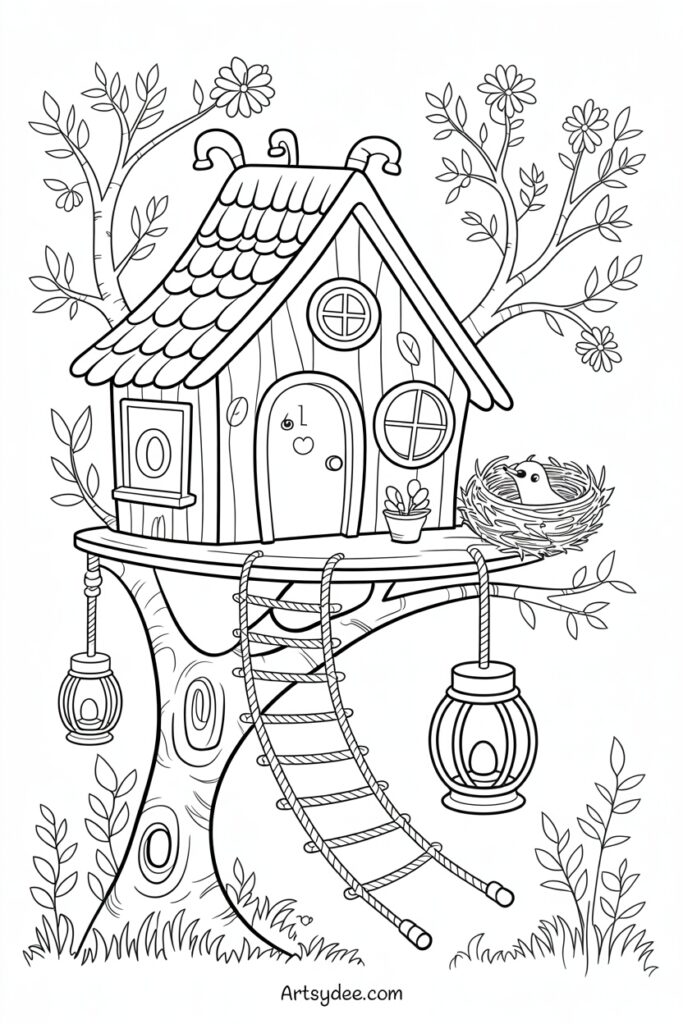
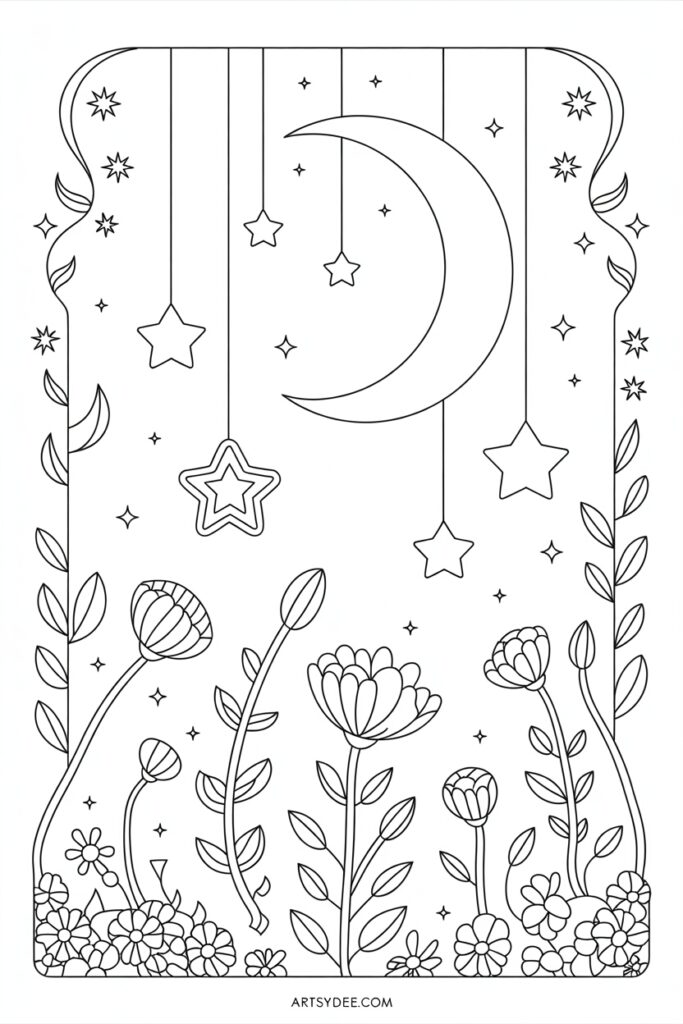
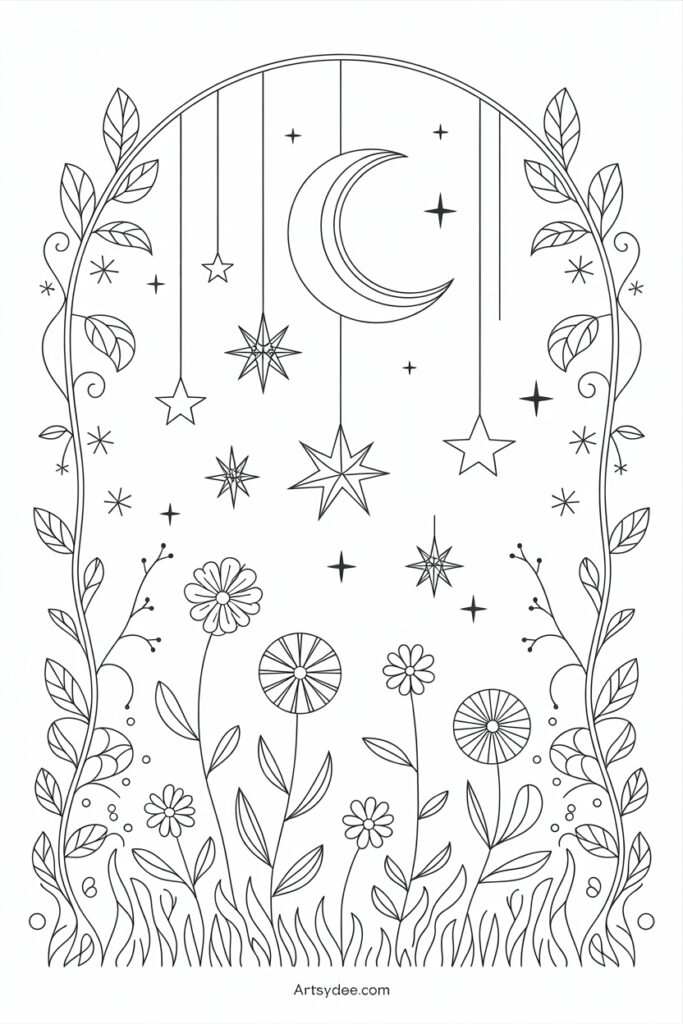
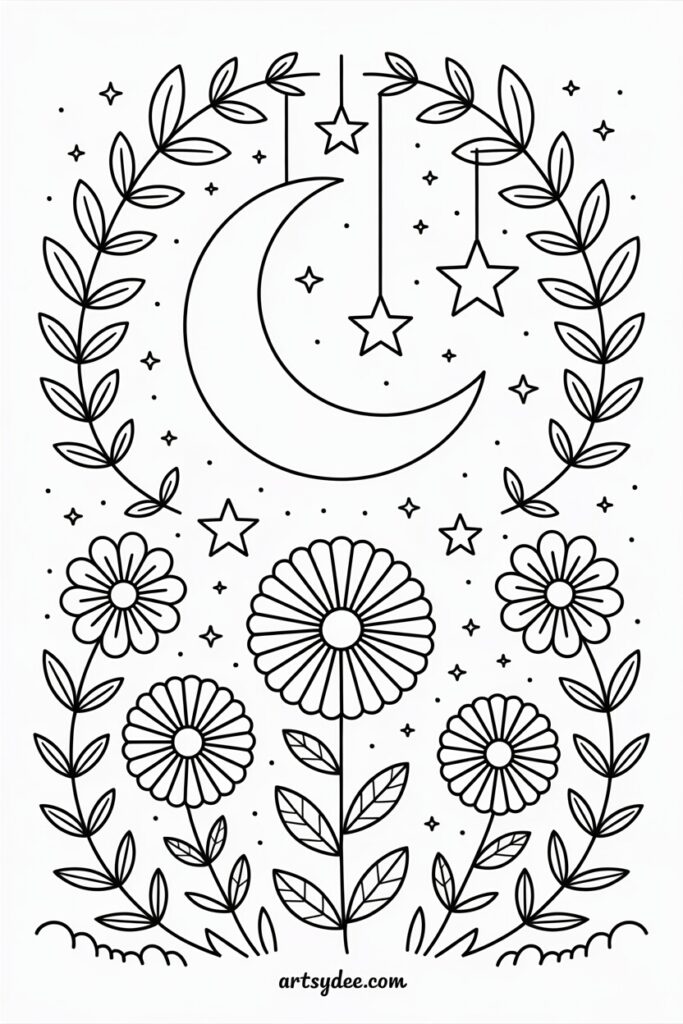
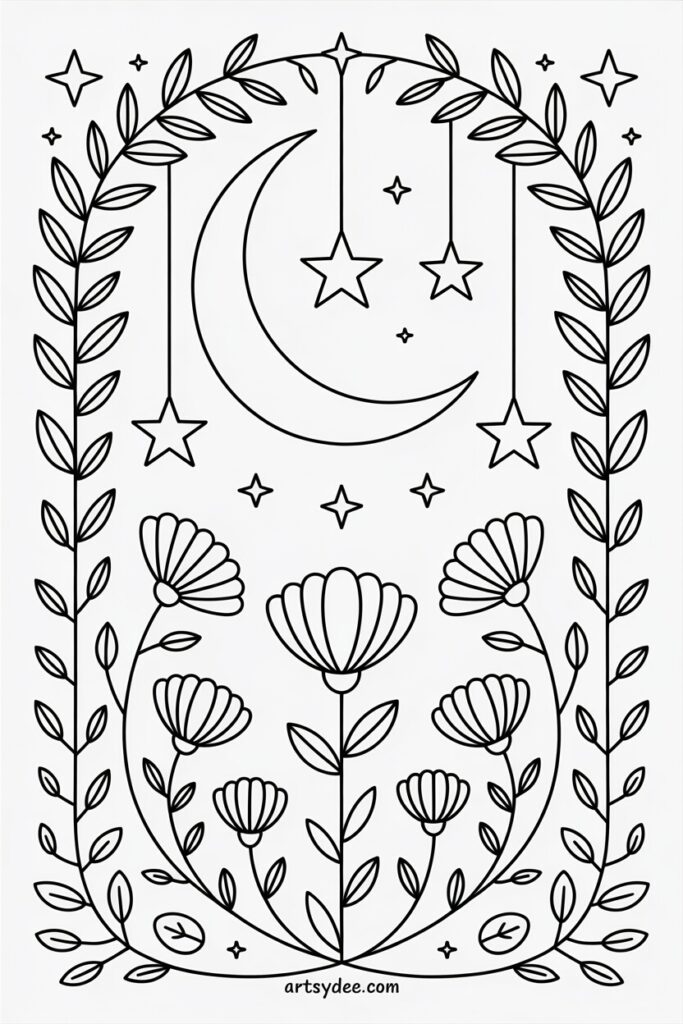
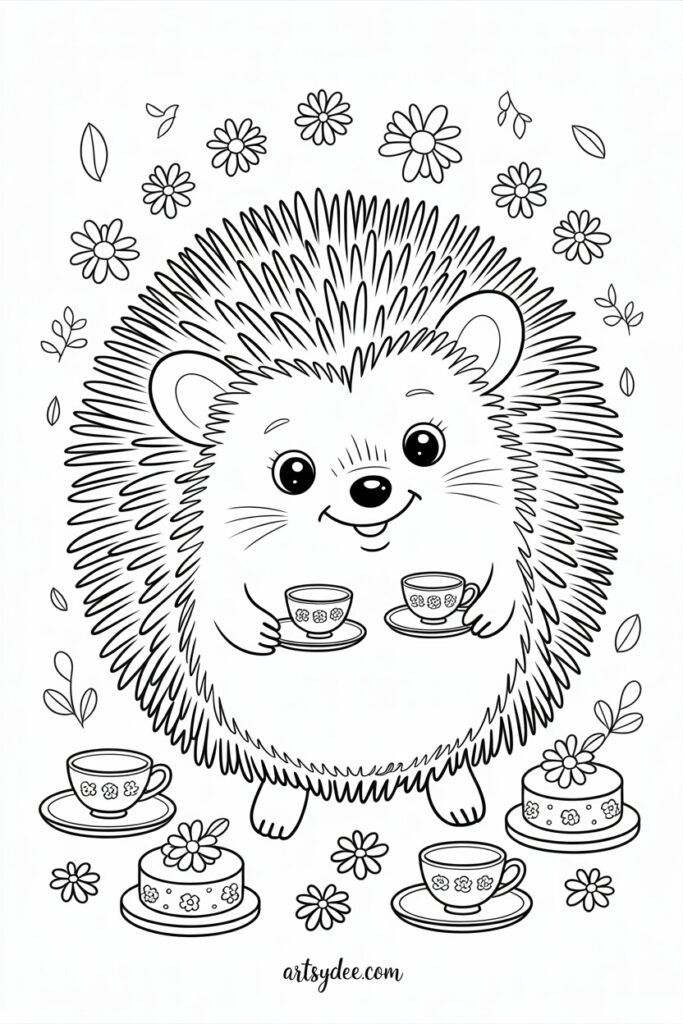
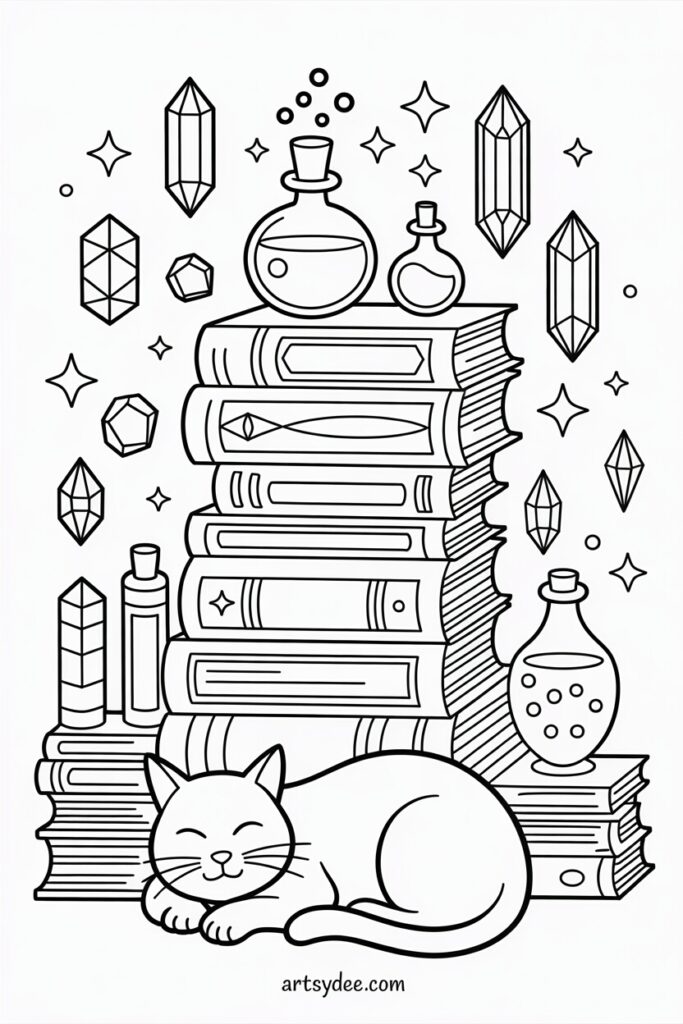
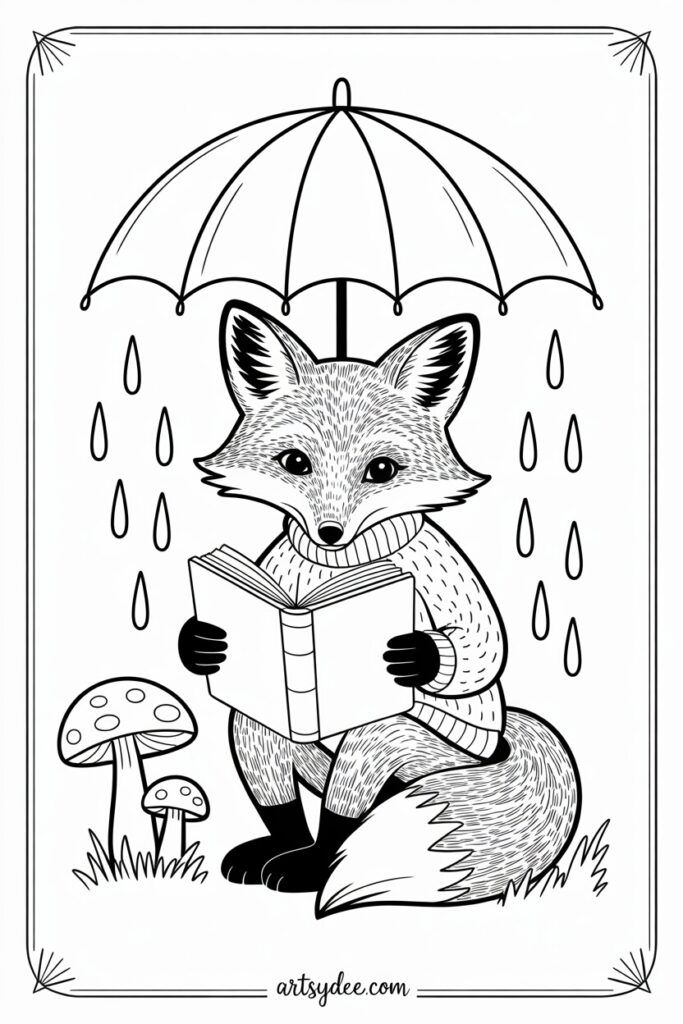
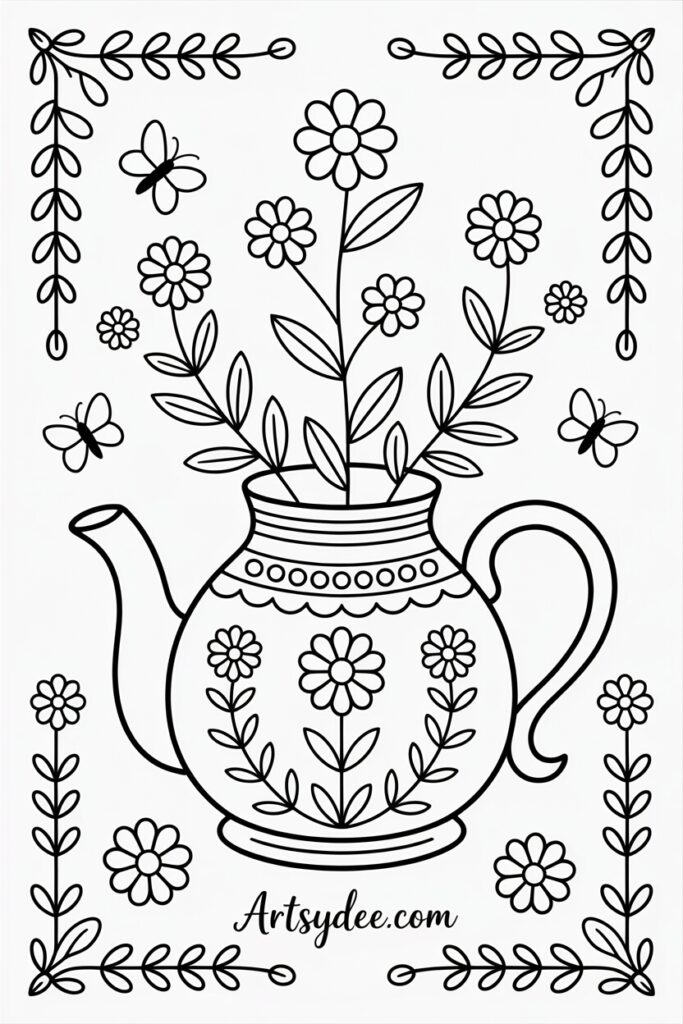
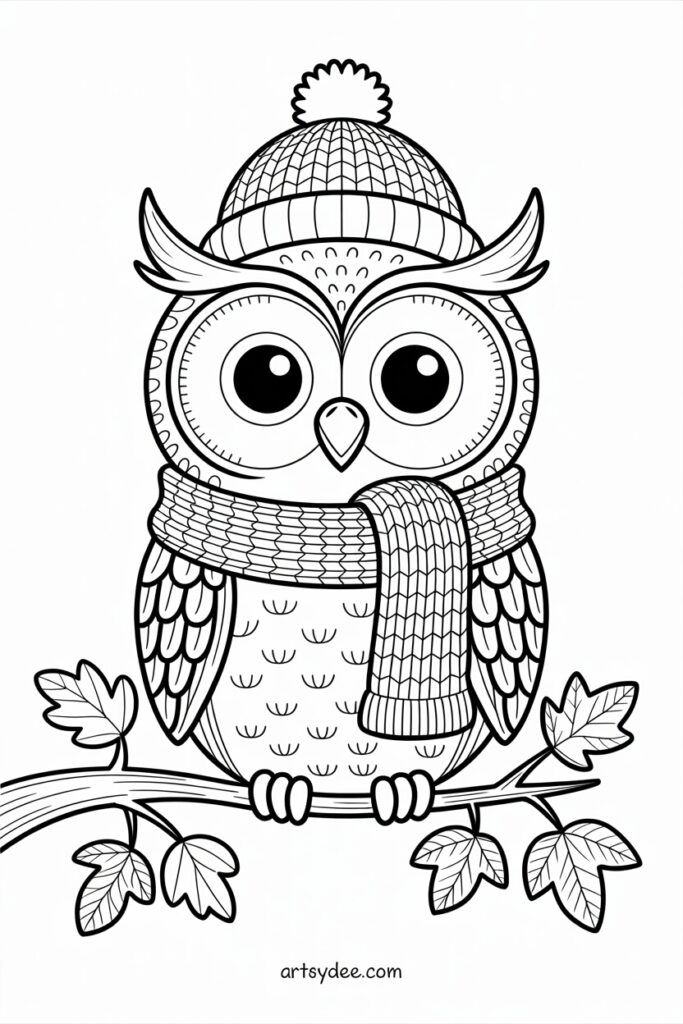
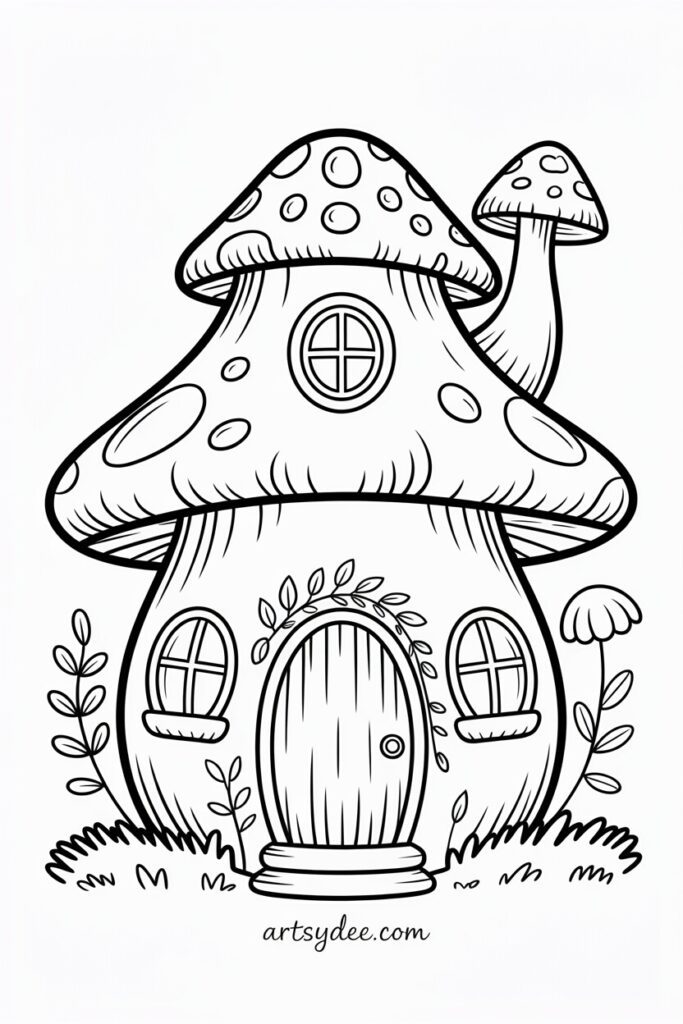
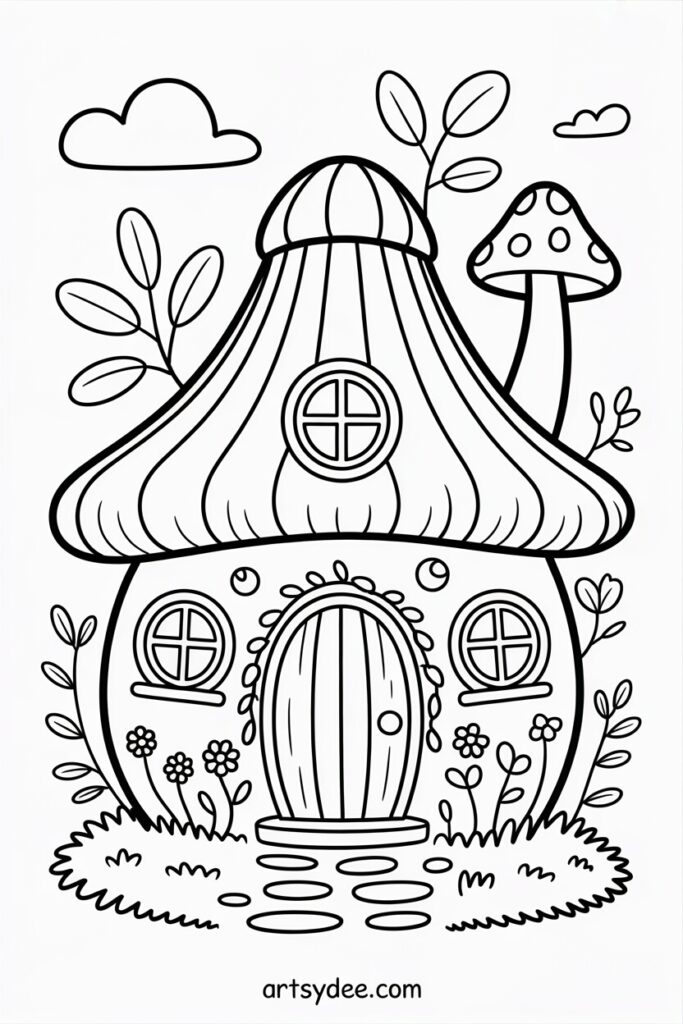
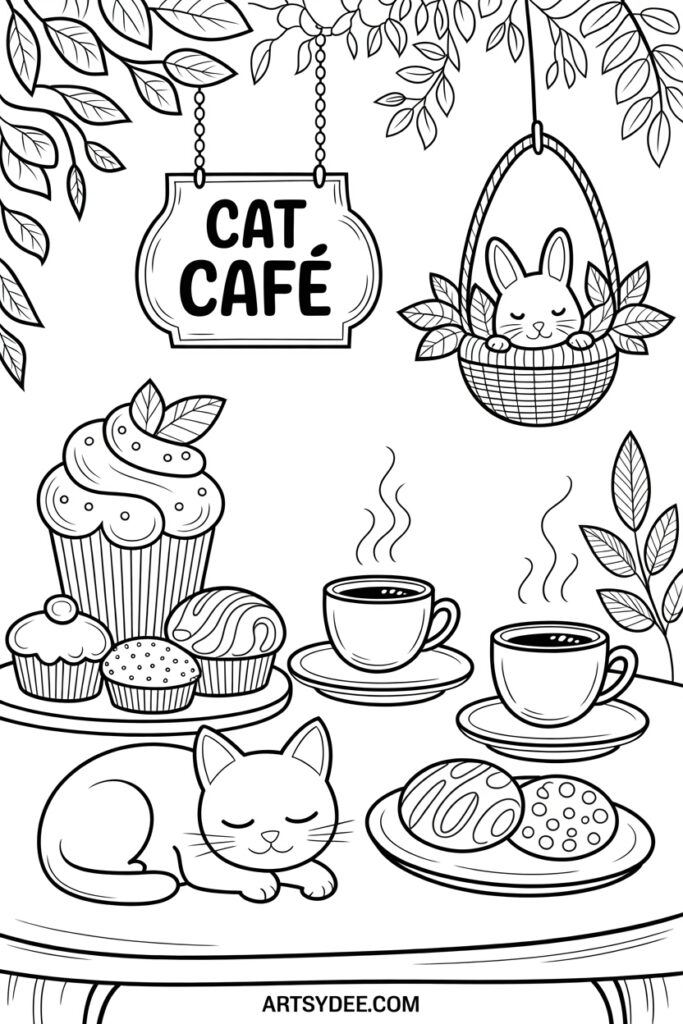
Grab the Free Whimsical Art Printables HERE (below👇🏻)!
Every freebie and tutorial on Artsydee is made with love (and plenty of coffee!) ☕ If you’d like to say thanks, you can buy me a coffee here → ko-fi.com/artsydee
To access the free in-post printables for this post, you’ll just need to create a free account or log in with the Grow.me tool. Then, confirm by email and refresh the page, and ALL my free printables will automatically unlock in every post!
Love These Printables? Get Even More Exclusive Creative Goodies in the Artsydee Creation Club! 🎨
If you’re enjoying these free printables, why not join my Artsydee Creation Club? As a member, you’ll gain access to tons of printables like this one, which are delivered to you every week. Plus, you’ll get sneak peeks at upcoming projects and have a say in what content I create next. ✨
Join today and unlock premium resources to take your creativity to the next level!
Artsydee Creation Studio Templates & Printables (plus hundreds more)…











